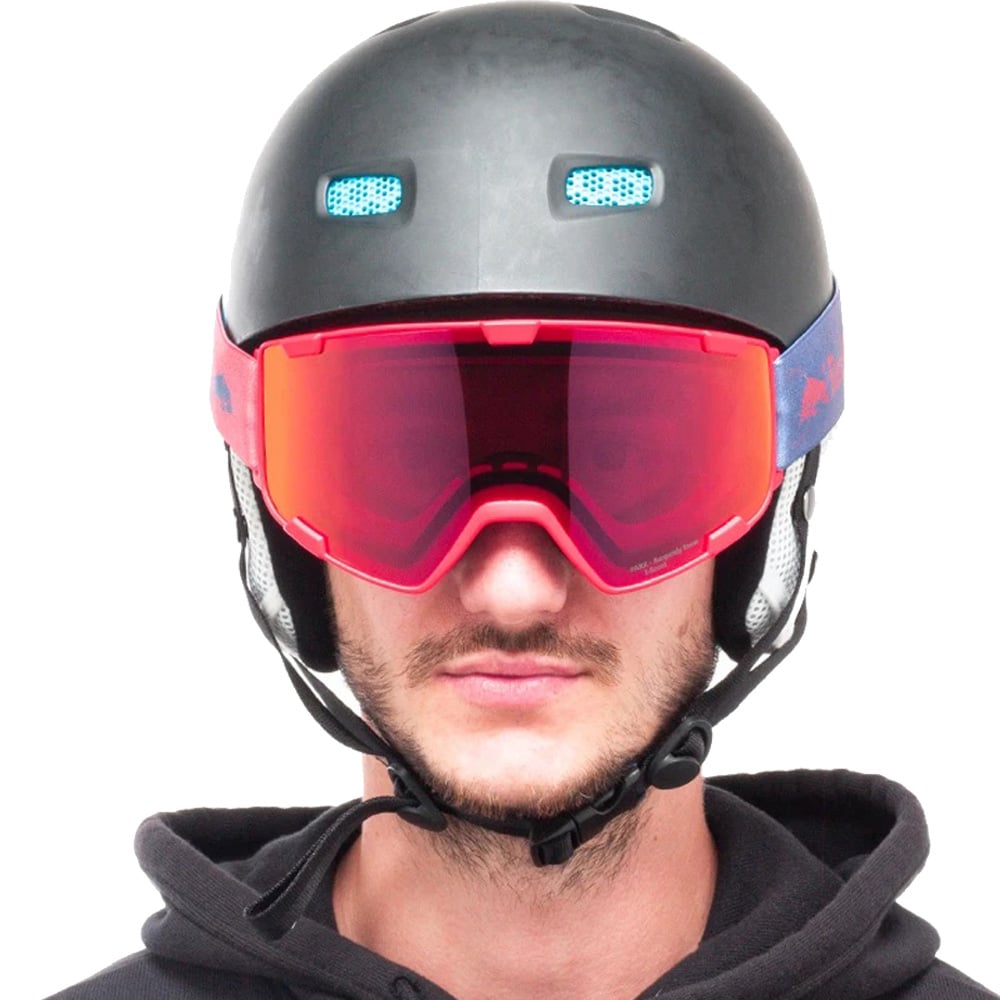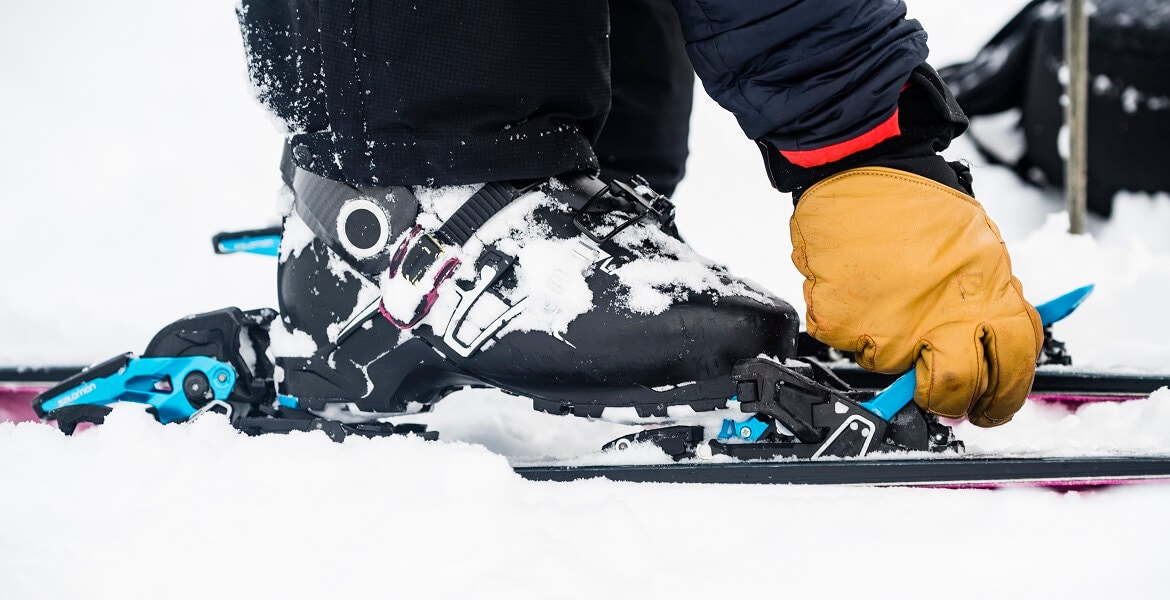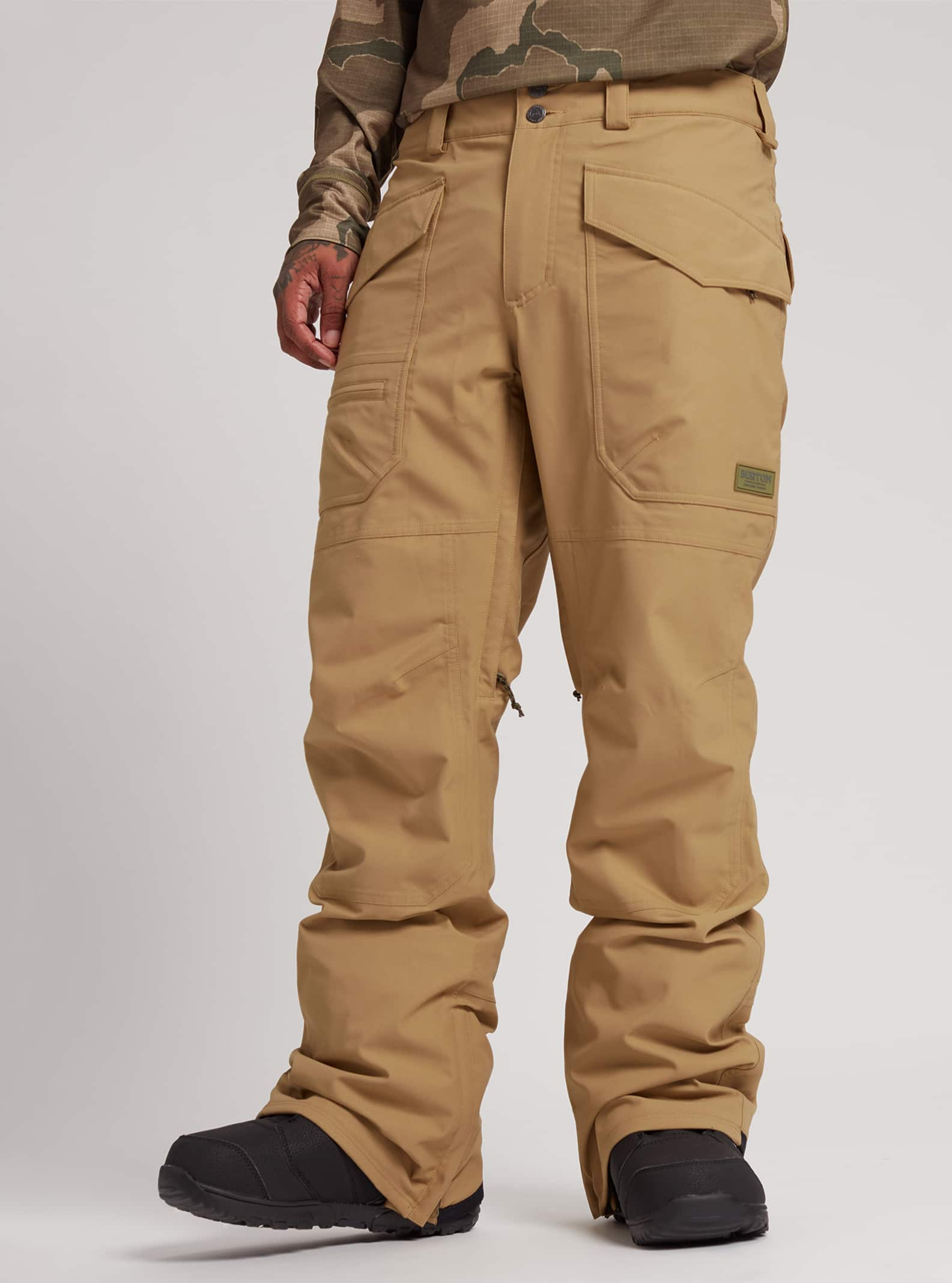
The ski weight is the combined weight of both skis and bindings. It determines the ski's ability to perform and its suitability for you. It also impacts your ability ski in different snow conditions.
Ski Width
A ski's width influences how easy it is to turn and handle a variety of snow conditions. The waist width of a ski is usually narrower to allow for faster edge turns in powder and non-grommed, while wider waist widths provide better flotation when it comes to soft, wet snow.
Touring Ski Length
The length of a touring skiing ski will determine how fast it can start and maintain turns, especially at speed. It is generally easier to turn longer skis than shorter ones. However, this all depends on the conditions and the skier’s ability.
Track Setter Dimensions
Cross-country ski track settings determine the ease of releasing your boots from the clamp in case you are hurt. The higher the din setting, the more force it takes to release your boot from the binding. This helps to protect your ankles and knees.

Bindings attach to skis and lock your feet in the right place. The most common type, track-mounted, attaches directly on the base of a ski. Alternatively, drill-mounted bindings, which are fixed with a drilling and gluing process, are used by advanced skiers.
All-mountain and all-telemark skis have track-mounted boundings. These bindings are simple to use. For advanced skiers, drilling-mounted bindings offer stability and greater security.
Boots are an essential part of your equipment
Your ski boots' flex rating can help you determine how flexible they are. While flexing boots with a higher degree of rigidity provide greater leverage and support for turns on steep terrain, they can be more uncomfortable when skiing at high speeds.
Softer flexing boots are ideal for beginners and those who want to spend less time on the snow. These boots also help reduce strain on your Achilles tendon and other muscles of your lower legs.
Boots can also be used to prevent injuries from occurring in an accident. They are useful for supporting your foot and ankle while skiing and also to keep you from sliding down the slopes.

How Do I Measure My Skis?
Skis were originally measured by their length. Today's ski manufacturers employ a scientific method of measuring skis. Instead of using length, they use camber measurements. This allows you more accurate measurement of your ski size.
Which length of ski is the most suitable?
If you're a beginner, it's best to start with a short length. This will make it easier to initiate turns and increase your speed. For intermediate and advanced skiers, a longer length is recommended to increase stability and float in soft snow.
Do I Really Need Long Skis?
Although it can be more difficult for longer skis to ski at speed they are also easier to control in different snow conditions. Ideal skis will be of the correct length for your height as well as your ability level. Talk to your local retailer about the ideal length skis. They'll be able to help you select the right skis for your abilities and preferences.
FAQ
How can you find affordable accommodations when you travel abroad?
Cheap accommodation options for travelers include hostels, hotels, guest houses, and bed & breakfasts.
Hostels offer affordable accommodation in dorm rooms with shared bathrooms and living areas.
Hotels are often located in tourist areas. They offer private rooms with en-suite bathrooms.
Guesthouses look and feel similar to hostels except that there are often more people in each room.
These bed & breakfasts are very popular with budget-conscious travellers. Guests stay in private homes and enjoy a full breakfast included in the price of their stay.
Which countries have the best cuisine?
Different countries have different cuisines. It is difficult to know which countries are best at cooking.
But we can show you which countries serve the best food!
The top three countries, according to TripAdvisor users, are:
-
Italy - Italy has been voted number 1 by TripAdvisor users for its amazing food.
-
France – France was ranked 2nd because of its rich cultural and culinary heritage.
-
Spain - Spain was third due to its beautiful beaches and great weather.
Are you worried about losing something while you're on the road?
Yes, I often forget stuff. This happens especially when I'm going on a short trip. Fortunately, I always bring everything I need, so I don't run out.
My passport is one example. And I always check whether I have enough money when I buy tickets.
Also, my phone charger is always with I. A small bag is also handy for storing other items.
How long does it take for you to fly between countries?
The distance between two airports and the weather conditions affect the time taken to fly.
Average flight time is about 3 hours.
The actual flight time is dependent on many factors, including the airline, aircraft type, delays at the airport, weather conditions, and the airline.
What can I pack in my suitcase?
Two pairs of shoes is a good rule of thumb. You need one pair for walking in the city; another pair to go on vacation.
You should also make sure you have enough clothes for both situations. For plane travel, make sure to bring extra socks, underwear, shirt, and pants.
It's a good idea to bring along some clothes for longer stays. This will make it easier to go shopping for new outfits and won't make you feel uncomfortable.
Comfortable shoes are essential for those who take the bus or train. Also, if driving, bring extra tires.
You'll also need to pack plenty of toiletries such as soap, shampoo, toothpaste, deodorant, and moisturizer.
You'll also need a flashlight and an insect repellent.
Don't forget to put all these items in one bag rather than trying to fit them into several different bags. It will help you save both time & space.
And finally, don't forget to pack a small towel and washcloth. These will come in handy after a long day sightseeing.
Statistics
- Between the ages of 11 and 13, kids, or tweens, will likely want some autonomy but also need boundaries. (travelandleisure.com)
- Alcoholic beverages with more than 24% but not more than 70% alcohol are limited in checked bags to 5 liters (1.3 gallons) per passenger and must be in unopened retail packaging. (tsa.gov)
- You can use compression sacs or cubes to reduce the volume of your clothes by up to 80%—this is especially convenient for bulky items such as sweaters and jackets. (eaglecreek.com)
- That's an 18% jump from 2019, the previous record year. (travelandleisure.com)
- They're also likely to offer babysitting services, in case you'd like to have dinner one night after 7 p.m. (travelandleisure.com)
External Links
How To
How to plan your next vacation
Planning a trip involves many things like booking flights, hotels, car rentals, activities, etc. It includes important considerations such a budget, destination, weather forecast, time frame, etc.
These are the things you should keep in mind as you plan your next vacation.
We have put together a step-by–step guide to help plan your next vacation. This guide is based on customer feedback and our experience. We hope this guide helps you to plan your next vacation with minimal hassle.
Steps:
-
Plan your Budget - Planning your budget is one of the most important steps in preparing for a trip. Before you begin planning for your trip, you need to know how much money it is you are willing and able to spend. If you don’t have enough money, it might be necessary to cancel your trip.
-
Book Your Tickets - Once you've decided on your budget and set your priorities, booking your flight tickets is the first thing that you should do. Book the best available flight deal at the lowest possible price. Check to see if there are any seasonal specials offered by airlines. These deals could be a great way to save money.
-
Pick Your Destination. Once you've booked your tickets, the next step is to decide where to travel. Multiple factors will play a role in choosing the destination you choose, such as location (wherever you are), climate (what season), culture (how friendly and affordable it is), cost (how affordable it can be) and cost.
-
Find Accommodations. There are many options for accommodation, from budget hostels to luxurious suites. The type of accommodation you choose will depend on your preferences and needs. If you need to be near the city center, a hotel may not suit your needs. On the other hand, if you prefer quiet places away from crowds, a homestay may suit your requirements better.
-
Select Activities and Attractions - Now is the time for you to choose the attractions and activities that you want to include in your itinerary. Depending upon the length of your stay you have two options: choose just a few activities, or add many more to your itinerary.
-
Determine Schedule - Now that you've selected the activities and attractions you'd like to include, it's time to determine your itinerary. Sticking to a plan will help you maximize the value of your trip. If you have the freedom to roam as you please, your trip will be even more enjoyable.
-
Create an Itinerary - An itinerary is a list of all information related to your trip. These information can include flights, accommodations, activities and restaurants. You will need to record them all and make a list.
-
Research online - Make sure you do your research before you leave for your trip. To find out what other travellers think about different destinations, read reviews and testimonials. This way, you will be able to plan accordingly.
-
Take care when packing. Too many clothes is not a good idea. Instead of bringing five sets of clothes, bring three. You should bring clothing that suits the conditions.
-
Always be prepared Make sure you have everything prepared before you go. Do not waste your time looking for important documents when you are in transit.